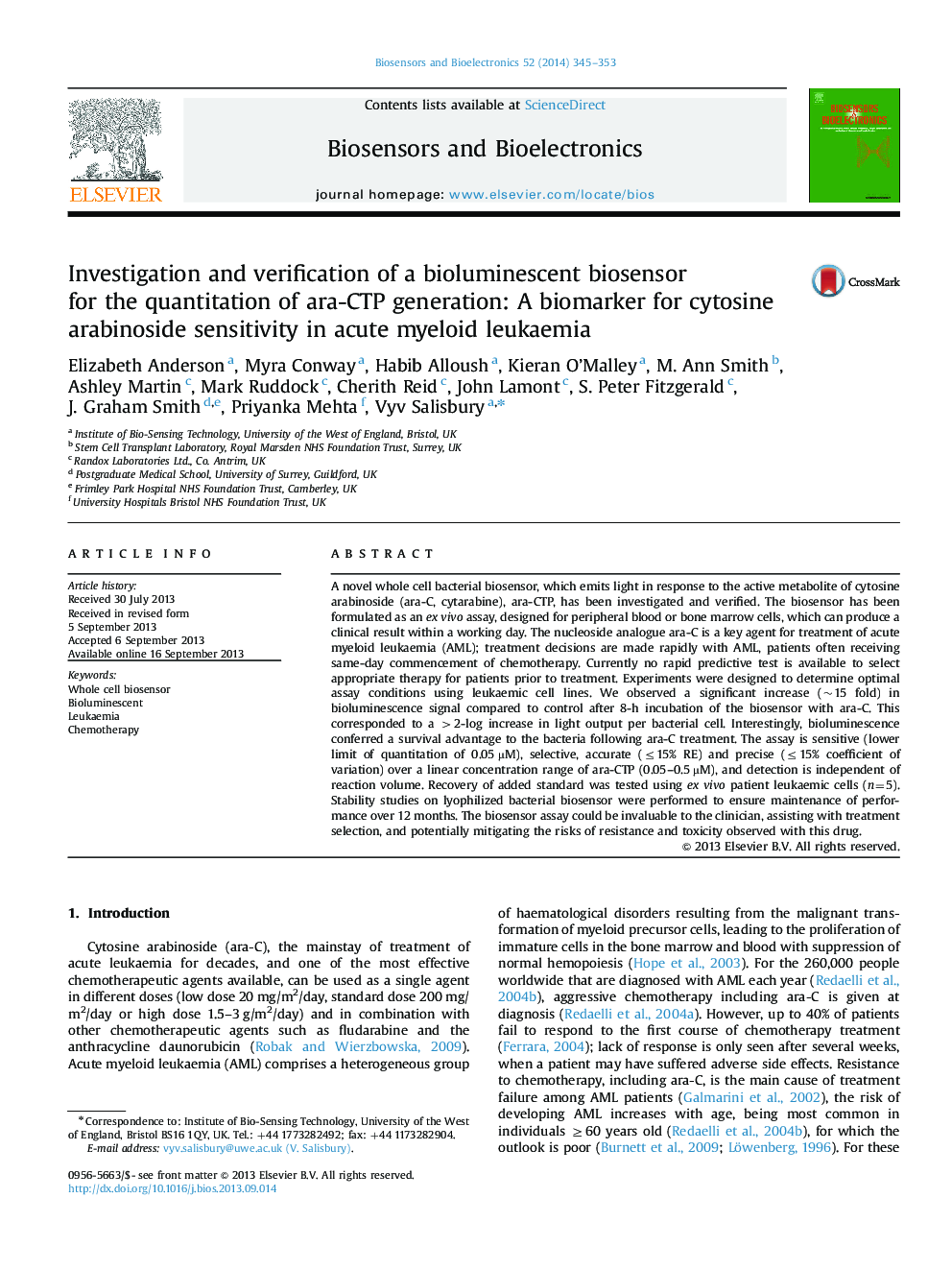| Article ID | Journal | Published Year | Pages | File Type |
|---|---|---|---|---|
| 866790 | Biosensors and Bioelectronics | 2014 | 9 Pages |
•Verification of an assay using a whole cell bioluminescent biosensor for evaluating chemotherapy treatment.•Investigation of biosensor mode of action.•Optimisation of assay procedure.•Opens the field for rapid predictive testing before chemotherapy treatment for a range of drugs and malignancies.•A benchmark in assay development using whole cell bioluminescent bacterial biosensors.
A novel whole cell bacterial biosensor, which emits light in response to the active metabolite of cytosine arabinoside (ara-C, cytarabine), ara-CTP, has been investigated and verified. The biosensor has been formulated as an ex vivo assay, designed for peripheral blood or bone marrow cells, which can produce a clinical result within a working day. The nucleoside analogue ara-C is a key agent for treatment of acute myeloid leukaemia (AML); treatment decisions are made rapidly with AML, patients often receiving same-day commencement of chemotherapy. Currently no rapid predictive test is available to select appropriate therapy for patients prior to treatment. Experiments were designed to determine optimal assay conditions using leukaemic cell lines. We observed a significant increase (~15 fold) in bioluminescence signal compared to control after 8-h incubation of the biosensor with ara-C. This corresponded to a >2-log increase in light output per bacterial cell. Interestingly, bioluminescence conferred a survival advantage to the bacteria following ara-C treatment. The assay is sensitive (lower limit of quantitation of 0.05 µM), selective, accurate (≤15% RE) and precise (≤15% coefficient of variation) over a linear concentration range of ara-CTP (0.05–0.5 µM), and detection is independent of reaction volume. Recovery of added standard was tested using ex vivo patient leukaemic cells (n=5). Stability studies on lyophilized bacterial biosensor were performed to ensure maintenance of performance over 12 months. The biosensor assay could be invaluable to the clinician, assisting with treatment selection, and potentially mitigating the risks of resistance and toxicity observed with this drug.
